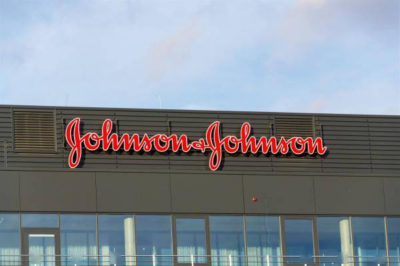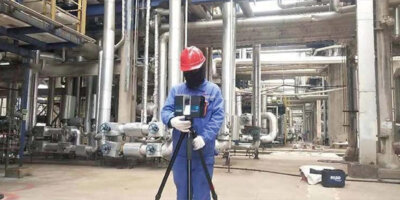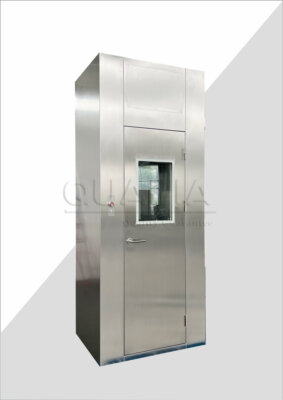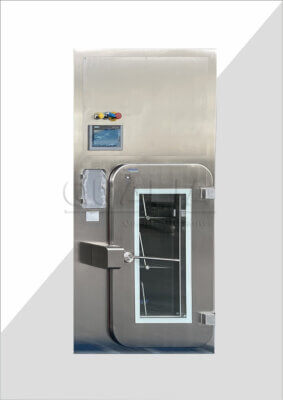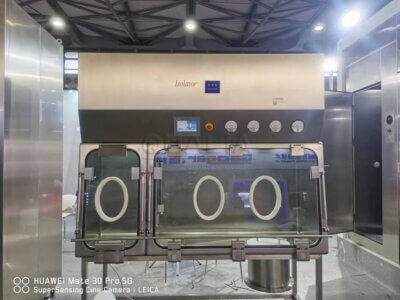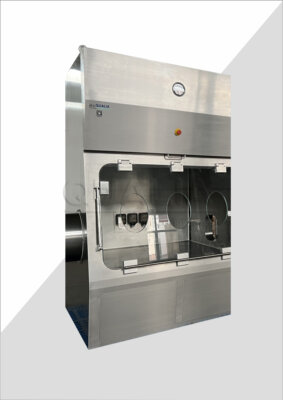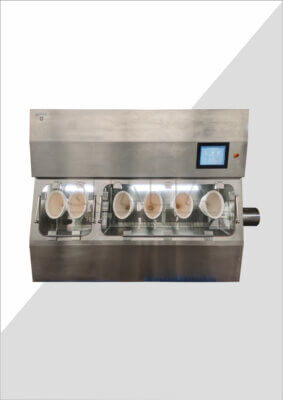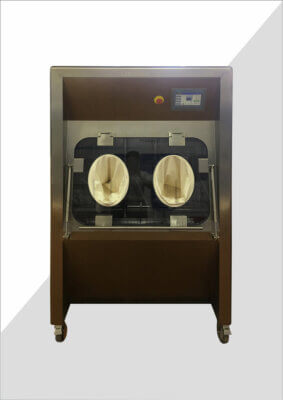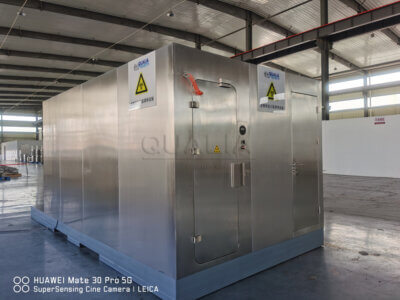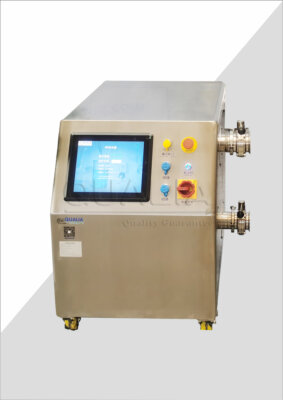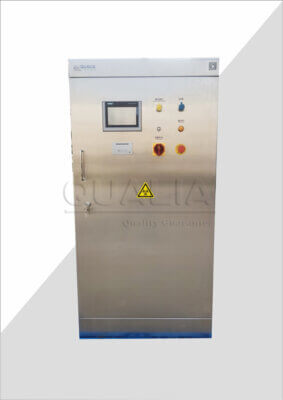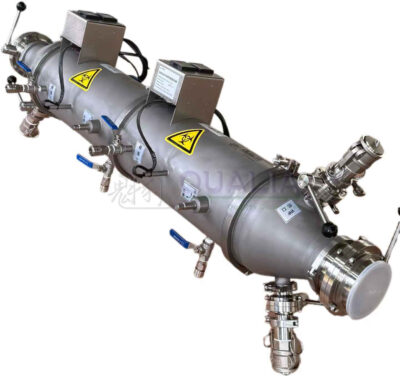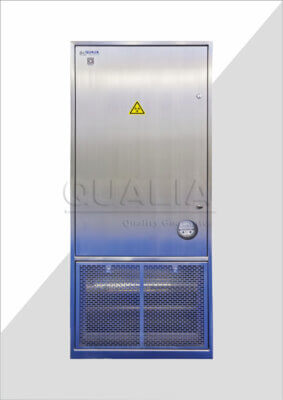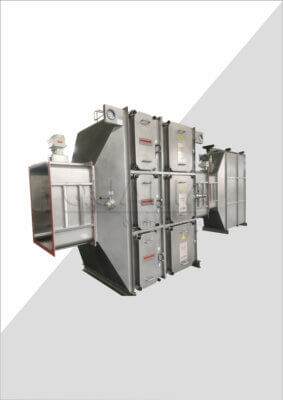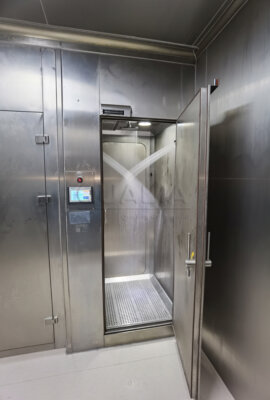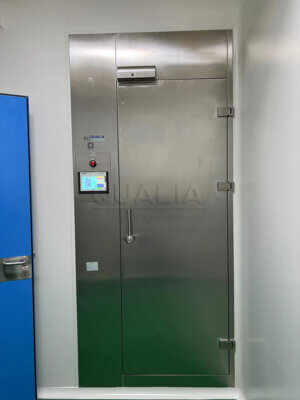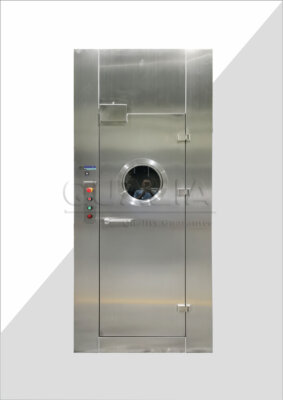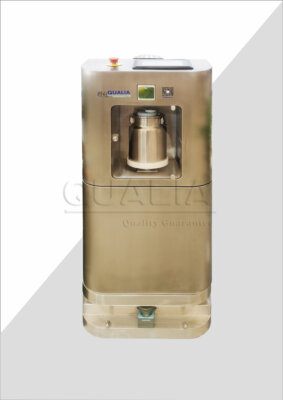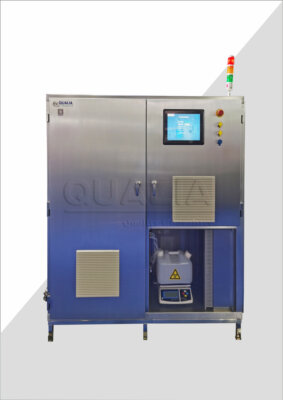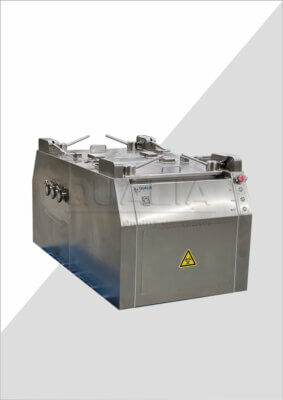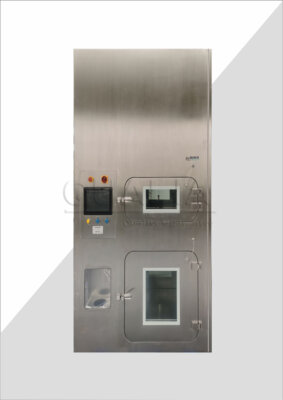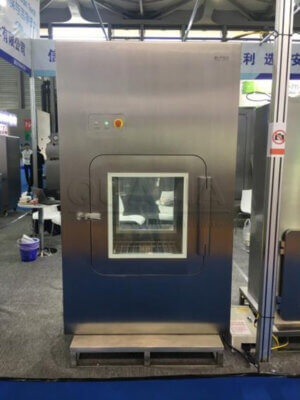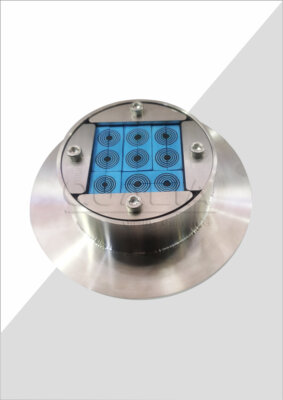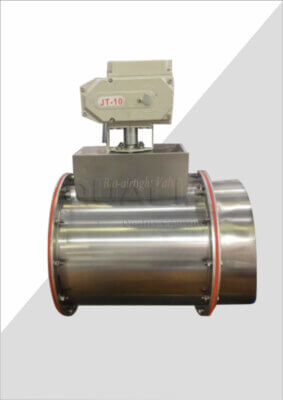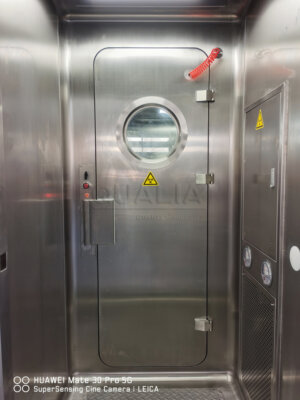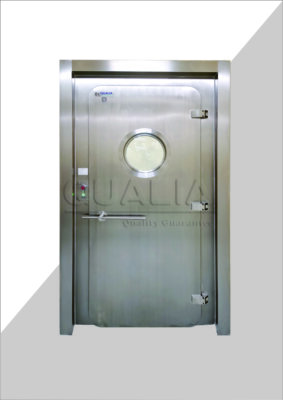Problem: Pharmaceutical and biotech facilities face mounting pressure to implement advanced containment solutions, yet APR door cost considerations often create decision paralysis. Facility managers struggle with incomplete pricing information, hidden implementation expenses, and uncertainty about long-term financial benefits.
Agitation: Without proper cost analysis, organizations either delay critical containment upgrades—risking regulatory compliance and worker safety—or make purchasing decisions based on incomplete information, leading to budget overruns and suboptimal system performance. Recent industry surveys indicate that 67% of facilities underestimate total implementation costs by 25-40%.
Solution: This comprehensive analysis provides detailed mechanical seal APR door price breakdowns, hidden cost identification, and proven ROI calculation methodologies. You’ll discover specific cost optimization strategies and real-world financial performance data to make informed containment investment decisions.
QUALIA Bio-Tech has analyzed hundreds of APR door installations across pharmaceutical, biotech, and research facilities to provide you with actionable cost intelligence and proven financial planning frameworks.
What Determines Mechanical Seal APR Door Cost?
The APR door cost structure involves multiple interdependent variables that significantly impact total investment requirements. Understanding these cost drivers enables accurate budget planning and prevents costly specification oversights during procurement.
Primary Cost Components
Mechanical seal APR door price typically ranges from $15,000 to $45,000 per unit, with premium containment-grade systems reaching $65,000. This wide pricing spectrum reflects critical specification differences:
Door size and airflow capacity represent the most significant cost variables. Standard 36″ x 80″ units with 500 CFM capacity start around $18,000, while larger 48″ x 84″ high-flow systems (1,200+ CFM) can exceed $38,000. The relationship isn’t linear—doubling airflow capacity typically increases costs by 60-80% due to more robust fan systems and enhanced structural requirements.
Containment classification directly impacts pricing structure. OEB 4 (Occupational Exposure Band) systems command 20-30% premiums over OEB 3 configurations due to enhanced sealing mechanisms and specialized filtration requirements. Our experience shows that pharmaceutical facilities often underestimate this specification impact during initial budgeting.
| Door Specification | Price Range | Key Features |
|---|---|---|
| Standard OEB 3, 500 CFM | $15,000-$22,000 | Basic mechanical seals, standard airflow |
| Enhanced OEB 4, 800 CFM | $25,000-$35,000 | Advanced sealing, medium airflow |
| Premium OEB 5, 1200+ CFM | $40,000-$65,000 | Maximum containment, high airflow |
Advanced Feature Cost Impact
Optional features can add 15-35% to base door seal pricing. Integrated decontamination systems (VHP compatibility) add $3,000-$8,000 depending on complexity. Emergency override capabilities and specialized monitoring systems contribute another $2,000-$5,000 per door.
It’s worth noting that while these premium features increase upfront costs, they often provide substantial operational savings. Facilities report 40-60% reduction in manual decontamination time with integrated systems, translating to significant labor cost recovery within 18-24 months.
How Do APR Door Prices Compare Across Different Specifications?
APR door cost analysis reveals significant pricing variations based on technical specifications, with smart specification selection potentially saving 20-30% on total project costs while maintaining required performance standards.
Performance-Based Pricing Tiers
Advanced containment specifications create distinct pricing tiers that don’t always correlate with actual application requirements. Many facilities over-specify systems, unnecessarily inflating project costs by 25-40%.
Basic containment systems (OEB 2-3) suitable for standard pharmaceutical operations range $12,000-$20,000. These systems handle typical dust containment and moderate potency compounds effectively. Mid-tier systems (OEB 4) designed for high-potency APIs range $22,000-$32,000, featuring enhanced mechanical sealing and improved airflow control.
Premium containment systems (OEB 5+) for highly potent or cytotoxic materials range $35,000-$55,000. According to containment engineering experts, these systems justify their premium through superior leak prevention and regulatory compliance assurance, but many facilities select them unnecessarily for moderate-risk applications.
Regional and Supplier Variations
Mechanical seal APR door price variations across suppliers can reach 30-35% for identical specifications. European manufacturers typically command 10-15% premiums due to advanced engineering heritage, while North American suppliers offer competitive pricing with excellent service support.
Installation complexity significantly impacts total project costs beyond door pricing. Retrofit installations in existing facilities average 40-60% higher labor costs compared to new construction integration. Pre-installation site preparation, including electrical upgrades and structural modifications, adds $5,000-$15,000 per door location.
Specification Optimization Strategies
Smart specification selection provides immediate cost benefits without compromising performance. Facilities achieving optimal sealing cost comparison ratios typically follow systematic specification methodologies:
Right-sizing airflow capacity eliminates unnecessary expense while ensuring adequate containment. Over-specifying airflow by 50% increases equipment costs by 25-30% and ongoing energy consumption by similar amounts. Containment engineers recommend specifying 20-25% above calculated requirements rather than arbitrary doubling.
Modular approach considerations allow future upgrades without complete system replacement. Initially installing OEB 3 systems with OEB 4 upgrade capability saves 15-20% upfront while preserving expansion options. This strategy particularly benefits multi-phase construction projects where containment requirements may evolve.
What Are the Hidden Costs in APR Door Implementation?
Beyond obvious equipment pricing, APR door cost projects involve substantial hidden expenses that frequently double initial budget estimates. Industry analysis reveals that 73% of installations exceed original budgets primarily due to inadequately planned auxiliary costs.
Infrastructure and Installation Requirements
Electrical infrastructure upgrades represent the most commonly underestimated expense category. APR doors require dedicated 20-30 amp circuits, specialized control wiring, and often emergency power connections. Electrical work averages $3,000-$8,000 per door, with older facilities requiring panel upgrades adding another $5,000-$12,000.
Structural modifications frequently exceed expectations, particularly in retrofit applications. Door frame modifications, wall reinforcements, and ceiling integration work typically range $4,000-$10,000 per installation. Facilities with non-standard wall construction or unusual ceiling heights can experience costs reaching $15,000-$20,000.
HVAC system integration creates cascading cost implications often overlooked during initial planning. APR doors interact with facility air handling systems, potentially requiring balancing adjustments, additional ductwork, or control system modifications. These integration costs average $2,500-$6,000 per door installation.
Validation and Commissioning Expenses
Regulatory validation requirements add substantial costs beyond equipment pricing. Door seal pricing calculations must include comprehensive testing protocols mandated for pharmaceutical applications.
Installation qualification (IQ) and operational qualification (OQ) testing typically costs $3,000-$7,000 per door, depending on complexity and documentation requirements. Performance qualification (PQ) adds another $2,000-$5,000, including containment testing, airflow verification, and mechanical seal integrity validation.
| Cost Category | Typical Range | Often Overlooked Items |
|---|---|---|
| Electrical Work | $3,000-$8,000 | Emergency power, control integration |
| Structural Modifications | $4,000-$10,000 | Wall reinforcement, unusual dimensions |
| Validation/Testing | $5,000-$12,000 | Extended testing cycles, documentation |
| Training/Documentation | $1,500-$4,000 | Operator certification, SOPs |
Training and Documentation Costs
Comprehensive operator training programs cost $1,500-$4,000 per installation, covering proper operation, emergency procedures, and basic maintenance protocols. While this represents a small percentage of total project costs, inadequate training creates long-term operational inefficiencies and potential safety risks.
Standard operating procedure (SOP) development and documentation updates add $800-$2,500 per door installation. Pharmaceutical facilities require detailed documentation integration with existing quality systems, often necessitating third-party technical writing services.
How to Calculate ROI for Mechanical Seal APR Door Investment?
Developing accurate APR door ROI calculator methodologies requires comprehensive analysis of both quantifiable savings and risk mitigation benefits. Successful facilities typically achieve 18-36 month payback periods through systematic cost-benefit evaluation.
Direct Cost Savings Calculation
Energy efficiency improvements provide the most measurable ROI component. Modern mechanical seal systems reduce energy consumption 25-40% compared to traditional containment methods through optimized airflow management and advanced fan technologies.
A typical pharmaceutical facility installing six APR doors saves $12,000-$18,000 annually in energy costs alone. These savings result from reduced HVAC load, optimized air changes, and elimination of continuous high-volume exhaust requirements. At current energy rates, this translates to cumulative savings of $60,000-$90,000 over five years.
Labor cost reductions offer substantial ROI contributions often undervalued in initial calculations. Automated sealing systems eliminate 60-80% of manual containment setup time, saving 15-25 minutes per production cycle. For facilities running multiple daily cycles, labor savings reach $8,000-$15,000 annually per door installation.
Risk Mitigation Value Assessment
APR door cost analysis must include risk mitigation benefits, though quantifying these advantages requires sophisticated modeling approaches. Regulatory compliance assurance provides significant value through audit readiness and reduced inspection concerns.
Industry experts estimate that facilities with advanced containment systems experience 40-50% fewer regulatory citations during inspections. While difficult to quantify precisely, avoiding single regulatory issues can save $50,000-$200,000 in remediation costs, legal fees, and production delays.
Worker safety improvements offer both direct insurance benefit reductions and indirect productivity gains. Facilities report 70-85% reduction in containment-related safety incidents following APR door installation, contributing to lower insurance premiums and reduced workers’ compensation claims.
Long-term Financial Performance Metrics
Sealing cost comparison over 7-10 year lifecycles demonstrates substantial financial advantages despite higher upfront investments. Traditional containment methods require more frequent maintenance, consumable replacements, and periodic major overhauls.
Mechanical seal APR doors typically require major maintenance every 3-4 years costing $2,000-$4,000, while traditional systems need annual maintenance averaging $3,000-$5,000 plus frequent consumable replacements. Over ten years, maintenance cost advantages reach $15,000-$25,000 per door installation.
Equipment lifecycle analysis shows mechanical seal systems maintaining 85-90% performance efficiency after ten years, compared to 60-70% for traditional containment methods. This sustained performance translates to consistent energy efficiency and reduced replacement pressure, extending effective facility lifecycle planning.
Which Factors Most Impact Long-term Sealing Cost Analysis?
APR door cost evaluation requires comprehensive lifecycle assessment considering performance degradation, maintenance requirements, and evolving regulatory standards. Facilities achieving optimal long-term value focus on specific cost drivers that compound over 5-10 year periods.
Maintenance Cost Evolution Patterns
Mechanical seal systems exhibit distinctive maintenance cost patterns significantly different from traditional containment approaches. Years 1-3 typically require minimal maintenance beyond routine inspections and minor adjustments, averaging $500-$1,200 annually per door.
Years 4-6 introduce more substantial maintenance requirements including seal replacement, fan system servicing, and control system updates. Annual maintenance costs during this period average $2,000-$3,500 per door, still remaining below traditional system annual averages.
Years 7-10 require comprehensive system refurbishment including major seal replacement, motor servicing, and potential control system upgrades. These major maintenance events cost $8,000-$12,000 but extend system life another 5-7 years, providing superior value compared to complete replacement scenarios.
Performance Degradation Impact
Door seal pricing analysis must account for performance decline affecting operational efficiency and potential regulatory compliance. Mechanical seal systems maintain 90-95% original containment performance through year 6, dropping to 80-85% by year 10 with proper maintenance.
This performance stability contrasts sharply with traditional systems experiencing 5-10% annual performance degradation. Containment engineers note that maintaining consistent performance levels reduces operational complexity and eliminates gradual contamination control deterioration.
Energy efficiency degradation follows similar patterns, with well-maintained mechanical seal systems consuming only 10-15% additional energy after ten years. Traditional systems typically experience 25-35% efficiency decline over similar periods, creating substantial cumulative cost implications.
| System Age | Maintenance Cost | Performance Level | Energy Efficiency |
|---|---|---|---|
| Years 1-3 | $500-$1,200 | 95-98% | 98-100% |
| Years 4-6 | $2,000-$3,500 | 90-95% | 90-95% |
| Years 7-10 | $3,000-$5,000 | 80-90% | 85-90% |
Regulatory Compliance Evolution
Evolving containment standards create long-term cost implications often overlooked during initial APR door cost analysis. Mechanical seal systems typically accommodate regulatory updates through software modifications and minor hardware adjustments, while traditional systems may require complete replacement.
Recent OEB guideline updates required substantial modifications for older containment systems, costing facilities $15,000-$25,000 per door location. Modern mechanical seal systems accommodated identical requirement changes through $2,000-$4,000 control system updates, demonstrating superior regulatory adaptability.
Future-proofing considerations suggest that mechanical seal technology platforms provide better long-term regulatory compliance assurance. As containment requirements continue tightening, systems with inherent upgrade capability offer substantial risk mitigation value difficult to quantify but essential for long-term facility planning.
What Cost-Optimization Strategies Work Best for APR Door Projects?
Implementing strategic procurement and specification approaches can reduce mechanical seal APR door price impacts by 20-35% while maintaining required performance standards. Successful cost optimization requires systematic evaluation across multiple project dimensions rather than simple price comparison.
Procurement Timing and Volume Strategies
Project phasing provides immediate cost advantages through volume purchasing power and installation efficiency gains. Facilities ordering 4+ doors simultaneously typically negotiate 8-12% price reductions while achieving 15-20% installation cost savings through batch processing approaches.
Sealing cost comparison across different procurement timing reveals optimal acquisition windows. End-of-quarter purchasing often yields 5-8% additional discounts as suppliers meet revenue targets. Annual budget planning allowing flexible timing can capture these periodic opportunities effectively.
Multi-year procurement agreements with scheduled delivery phases provide cost predictability while securing favorable pricing. Facilities committing to 3-5 year installation schedules often negotiate 10-15% overall cost reductions plus inflation protection provisions, particularly valuable during economic uncertainty periods.
Specification Right-Sizing Approaches
Performance requirement analysis eliminates costly over-specification common in containment applications. Independent containment engineering consultation costs $2,000-$5,000 but frequently identifies $10,000-$20,000 per door specification optimization opportunities.
Airflow capacity optimization represents the highest impact specification decision. Facilities reducing airflow requirements from 1,200 CFM to 800 CFM (while maintaining adequate containment) save $8,000-$15,000 per door plus 20-30% ongoing energy costs. Proper containment modeling ensures these reductions don’t compromise safety or regulatory compliance.
Modular upgrade planning allows phased capability enhancement without initial over-investment. Installing OEB 3 systems with documented OEB 4 upgrade paths saves 15-22% upfront while preserving future flexibility. This approach particularly benefits facilities with uncertain long-term containment requirement evolution.
Integration and Installation Optimization
Coordinated installation scheduling with other facility upgrades provides substantial cost advantages through shared infrastructure work and reduced operational disruption. Facilities combining APR door installation with HVAC upgrades or electrical improvements save 25-40% on auxiliary costs while minimizing production downtime.
In our experience, the most successful cost optimization combines strategic procurement timing, careful specification analysis, and coordinated project execution. A recent biotech facility achieved 28% total project cost reduction through volume purchasing, right-sized specifications, and integrated installation scheduling while exceeding containment performance requirements.
Facilities implementing comprehensive cost optimization strategies typically achieve APR door ROI calculator results showing 15-24 month payback periods compared to 24-36 months for standard procurement approaches. These improvements result from reduced upfront costs, optimized operational efficiency, and enhanced long-term value realization.
Conclusion: Effective APR door cost management requires comprehensive analysis encompassing upfront investment, hidden implementation expenses, and long-term operational benefits. Smart procurement strategies, proper specification right-sizing, and systematic ROI evaluation enable facilities to achieve optimal containment solutions while minimizing financial impact.
Key value drivers include energy efficiency gains averaging $2,000-$3,000 annually per door, labor cost reductions of $8,000-$15,000 per installation, and substantial risk mitigation benefits through enhanced regulatory compliance assurance. Facilities implementing strategic cost optimization approaches typically achieve 20-35% total project cost reductions while maintaining superior containment performance.
Next Steps: Begin with comprehensive containment requirement assessment to establish baseline specifications, then conduct sealing cost comparison across multiple suppliers using total lifecycle cost methodologies. Consider engaging independent containment engineering consultation to optimize specifications and identify cost-saving opportunities specific to your facility requirements.
Looking ahead, evolving containment regulations and advancing mechanical seal technologies suggest continued value enhancement for early adopters. Facilities investing in modern containment infrastructure today position themselves advantageously for future regulatory requirements while capturing immediate operational and financial benefits.
What specific containment challenges does your facility face, and how might strategic APR door investment address both current operational needs and long-term cost optimization objectives? For detailed specification guidance and project cost estimation, explore comprehensive APR door solutions designed specifically for pharmaceutical and biotech containment applications.
Frequently Asked Questions
Q: What are Mechanical Seal APR Doors, and how do they work?
A: Mechanical Seal APR Doors are designed to provide airtight containment using a strong but flexible gasket that is manually compressed against the doorframe. This ensures a reliable seal without the need for compressed air, offering a fail-safe solution in case of power loss. The doors are suitable for environments requiring high containment, such as BSL3 and BSL4 labs.
Q: What factors affect the cost analysis of Mechanical Seal APR Doors?
A: Several factors influence the cost analysis of Mechanical Seal APR Doors. These include:
- Initial Installation Costs: Lower compared to inflatable seal doors.
- Maintenance Requirements: More frequent due to gasket replacements and mechanical adjustments.
- Material and Construction: Options like stainless steel or low carbon steel impact overall cost.
- Operational Environment: High-traffic areas may require more maintenance.
Q: How does the ROI calculator for Mechanical Seal APR Doors work?
A: An ROI calculator for Mechanical Seal APR Doors assesses the return on investment by comparing initial costs with long-term savings and operational efficiencies. It considers factors such as reduced maintenance in low-traffic environments and the potential for cost savings through manual compression mechanisms.
Q: What are the pricing considerations for Mechanical Seal APR Doors compared to inflatable seal doors?
A: Mechanical Seal APR Doors generally have lower initial costs but higher ongoing maintenance expenses. In contrast, inflatable seal doors have a higher upfront cost but may offer better long-term cost-effectiveness due to less frequent seal replacements and automated pressure adjustments.
Q: What applications benefit most from Mechanical Seal APR Doors?
A: Mechanical Seal APR Doors are best suited for applications requiring high containment, such as BSL3 and BSL4 laboratories. They are particularly beneficial in environments with low traffic and no need for wheeled equipment, as they often feature a raised threshold.
External Resources
- Cost to Seal Door – 2025 Cost Calculator (Customizable) – Homewyse – Offers a customizable calculator for estimating the cost to seal a door, including labor, materials, and regional adjustments, useful for rough cost analysis but not specific to mechanical seal APR doors or ROI.
- Vacu-Pass Port Cost Analysis ROI Calculator – BioSafe Tech by QUALIA – Analyzes factors influencing the cost and ROI of vacuum and pneumatic sealed pass-through ports, including considerations relevant to mechanical seal APR doors, with detailed breakdowns by application, installation, and market context.
- APR Doors with Airtight Mechanical Seals – Presray – Provides product information on APR doors with mechanical airtight seals, covering applications, construction options, and performance but not explicit cost or ROI calculators.
- How to Calculate ROI on a New HVAC System – ISS Mechanical – Explains the methodology for ROI calculation in building systems that include door and duct sealing, with examples adaptable for mechanical seal door projects.
- Best VHP Passbox Manufacturers Cost Analysis ROI Calculator – QUALIA – Offers an in-depth guide to evaluating cost, ROI, and supplier selection for high-containment pass-through systems, which shares overlap in considerations for APR door mechanical sealing.
- Mechanical Seal APR Doors – Market Solutions Overview (QUALIA-Bio) – Presents insights into the mechanical seal APR door market, with discussions on performance, key pricing drivers, and strategic ROI considerations for laboratory and cleanroom applications.
Related Contents:
- What Are Mechanical Seal APR Doors | Basic Components & Functions
- Understanding APR Door Sealing Technology | Types & Applications
- Pneumatic APR Door Seals Cost | Pricing Guide | ROI Analysis
- Mechanical Seal APR Door Systems | Installation Guide & Setup
- Understanding Pneumatic APR Door Seal Technology
- Mechanical Seal APR Doors | Pressure Control & Safety Principles
- What Are APR Door Pneumatic Seals and How They Work
- Manufacturing APR Door Seal Systems | Industrial Applications
- Best APR Door Pneumatic Seal Suppliers | Vendor Selection Guide

